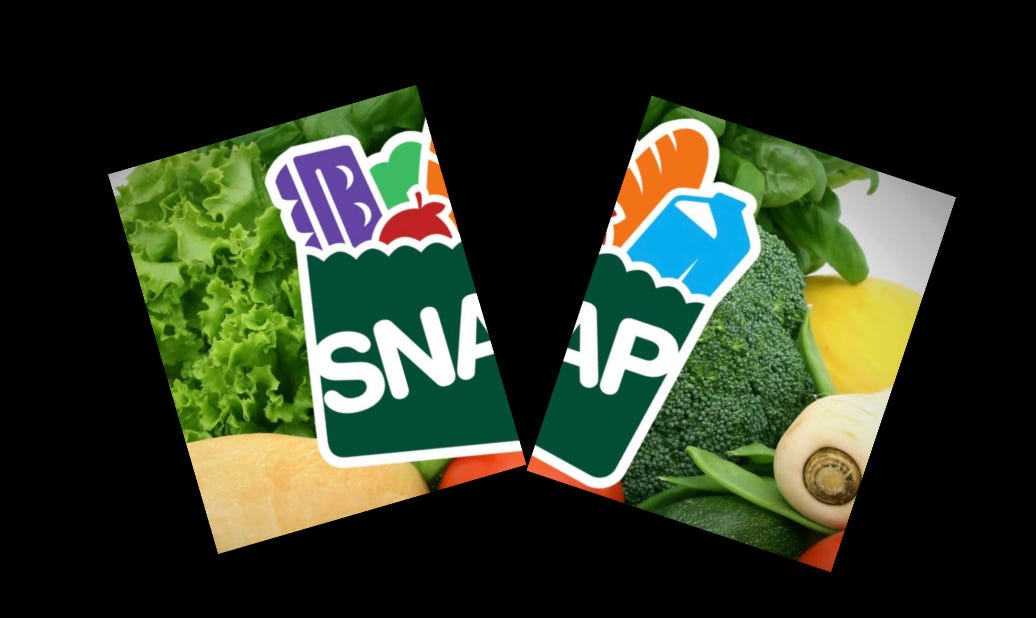Vermont Pledges State-Funded Plan as Federal Shutdown Threatens November Food Assistance
The announcement sets the stage for a high-stakes decision in Montpelier, as the state government attempts to build a financial bridge over a crisis created by the federal government shutdown.
Facing a looming cutoff of federal food assistance, the Vermont Governor’s Administration announced on October 23 that it is preparing an emergency, state-funded plan to prevent thousands of Vermonters from going hungry.
“Next week, my Administration will be presenting a plan to legislative leaders to ensure funding for SNAP recipients in case the federal government shutdown continues,” the administration stated. “I appreciate the close collaboration my team has had with lawmakers to ensure Vermonters are protected in the face of Washington disfunction.”
The announcement sets the stage for a high-stakes decision in Montpelier, as the state government attempts to build a financial bridge over a crisis created by the federal government shutdown, which entered its fourth week.
How the Federal Shutdown Stops Food Aid
The core of the problem lies in how the Supplemental Nutrition Assistance Program (SNAP) is funded. The program, known in Vermont as 3SquaresVT, is entirely paid for by the U.S. Department of Agriculture (USDA). While Vermont’s Department for Children and Families (DCF) manages the program, the money for the benefits comes from Washington.
While October benefits were secure—funded before the shutdown began on October 1—the federal appropriation has now run out.
According to national reports, the USDA has formally notified all states that it does not have the funds to issue November benefits. As reported by CBS News and the Associated Press, the agency has instructed states to “hold off” on preparing and sending payment files to the EBT card vendors, effectively freezing the national system.
This has triggered a national crisis. According to POLITICO, at least 25 other states, including California and Pennsylvania, have already begun sending formal cutoff notices to residents, warning them that no benefits will be issued on November 1.
The Scale of the Impact in Vermont
Vermont officials are developing their plan because the alternative is an immediate and severe cutoff for a significant portion of the state’s population.
According to state data, approximately 38,700 Vermont households—representing over 65,000 people—rely on 3SquaresVT. This figure includes thousands of children, seniors, and people with disabilities. A sudden loss of benefits would not only impact family grocery budgets but would also be felt by local retailers, co-ops, and farmers’ markets, as federal dollars are removed from the state’s economy.
The Governor’s announcement also noted the plan would address threatened heating fuel assistance, signaling a dual crisis of food and warmth just as winter approaches.
The Statehouse Dilemma: A Plan to Bridge the Gap
The “plan” being developed by the Administration and legislative leaders is, in effect, a proposal for the State of Vermont to use its own General Fund money to cover the tens of millions of dollars in benefits the federal government is failing to provide.
For this plan to work, state leaders must navigate two critical and unanswered questions.
The Technical Hurdle: Can Vermont physically get the money onto EBT cards? Since the USDA controls the federal payment system and has told states to “hold off,” it is not clear, according to policy analysts, whether Vermont has the technical ability to bypass the federal directive and load state funds onto the cards.
The Financial Hurdle: This is the most significant risk for Vermont taxpayers. If the state spends its own money to cover the benefits, there is no guarantee the federal government will ever pay that money back. According to policy experts and advocacy groups like Share Our Strength, reimbursement is not automatic. It would require a separate, retroactive act of Congress after the shutdown ends—a political uncertainty that leaves the state budget exposed.
The Core Questions for Vermonters
As state leaders prepare to debate this emergency plan, residents are left to consider the difficult options on the table.
Option 1: The State “Bridge” (The Vermont Plan)
Pro: This is the path Vermont officials have pledged to take. It ensures the state’s most vulnerable residents can still buy food on November 1, avoiding an immediate humanitarian crisis.
Con: It requires the state to spend millions of un-budgeted dollars, taking on a significant financial risk. If the federal government refuses to reimburse the state, that money will be permanently gone from the state budget, potentially forcing cuts to other programs down the road.
Option 2: Federal Contingency Funding
Pro: According to policy groups like the Center on Budget and Policy Priorities, the USDA has access to a $5 to $6 billion contingency fund that it is legally able to use. Advocates and some U.S. Senators are pressuring the federal administration to release this money, which could cover at least partial benefits for November nationwide.
Con: This option is entirely out of Vermont’s control and, so far, the federal administration has given no indication it plans to use this fund.
Option 3: No Action (The Path of Other States)
Pro: This path poses no financial risk to the state’s taxpayers.
Con: This is the option at least 25 other states are taking. It would mean that on November 1, tens of thousands of Vermonters would have no money for groceries, forcing them to rely on an already-strained network of local food shelves.
When legislative leaders review the Administration’s plan, their decision will weigh the immediate, tangible crisis of feeding Vermonters against the serious, long-term risk to the state’s finances.



